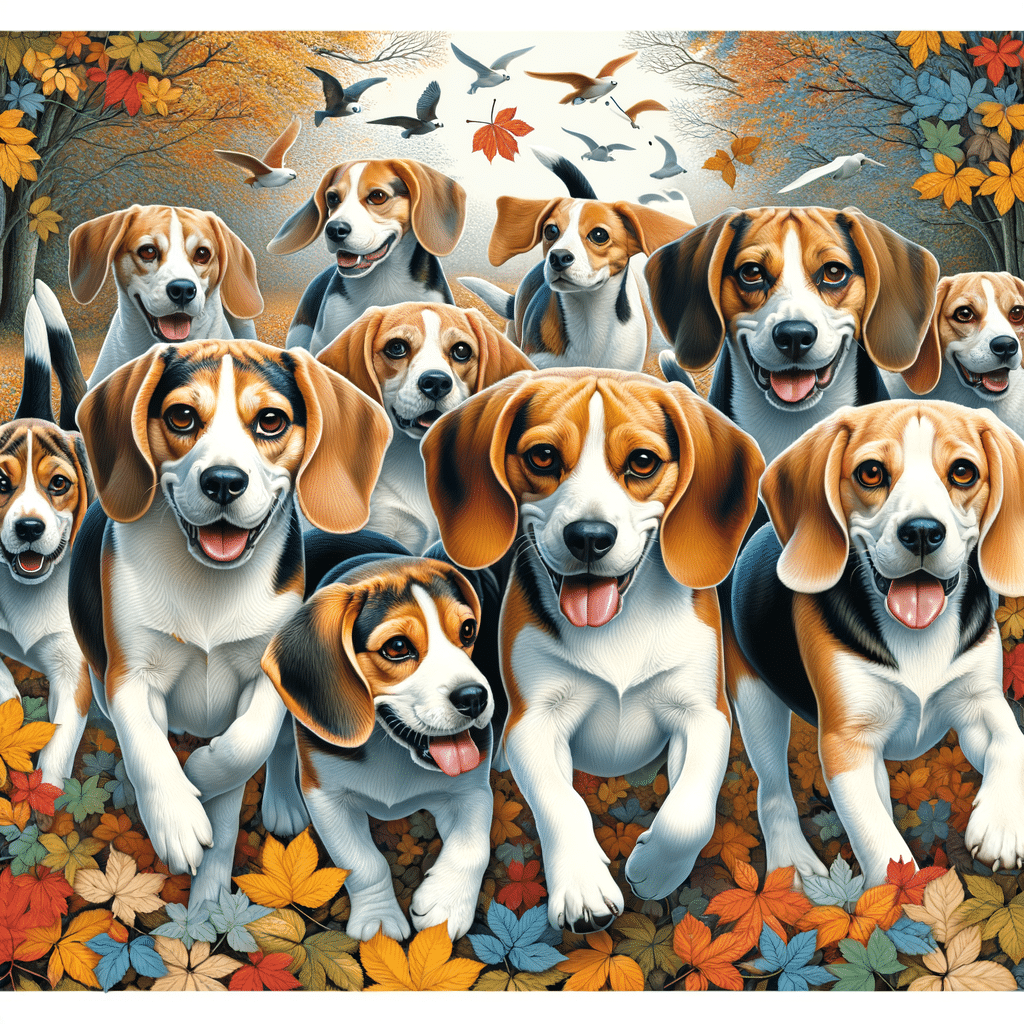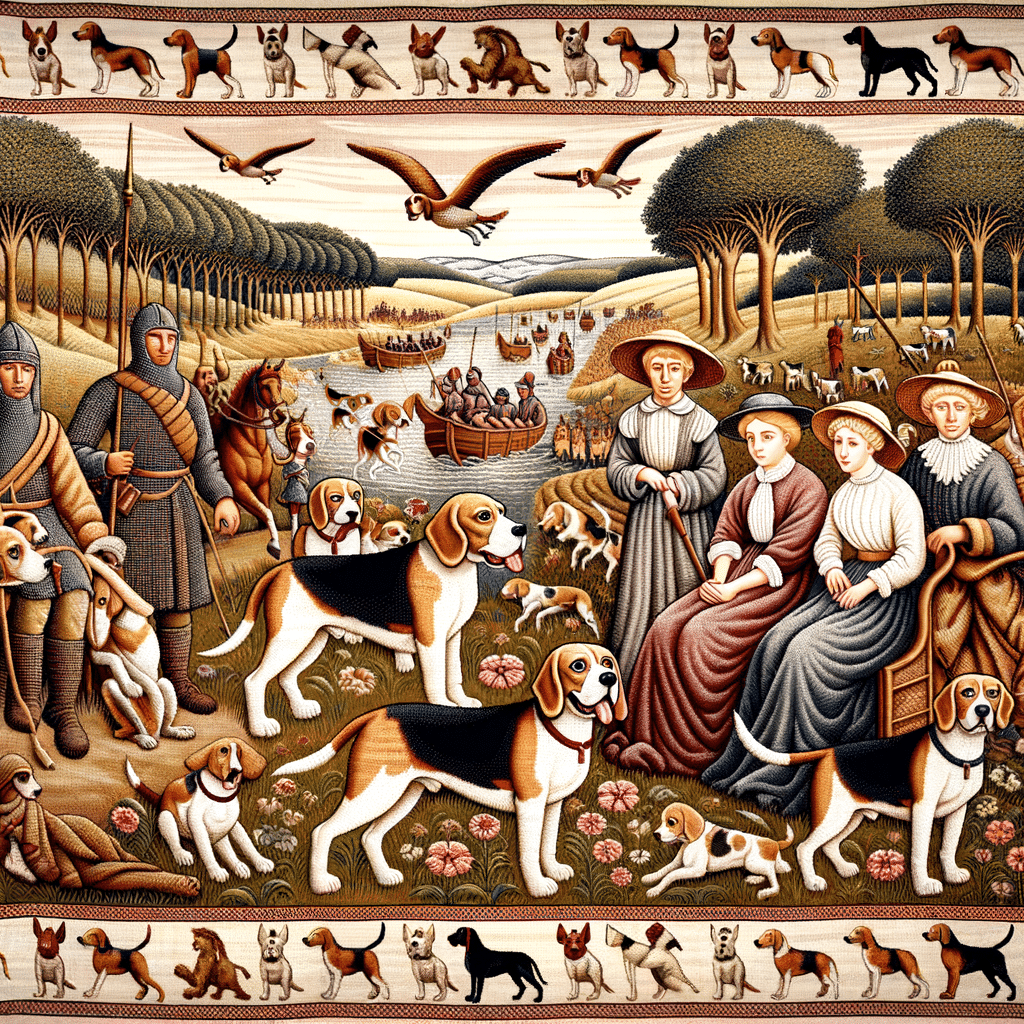Choosing between a beagle and a blue heeler as a new canine addition to your family? If so, it helps to understand the traits that define these dog breeds.
In This Article
Beagles are known for their friendly demeanor and excellent tracking abilities; they are a breed with a lot of history, often used for hunting due to their keen sense of smell. Conversely, blue heelers, or Australian cattle dogs, are herding dogs prized for their intelligence and work ethic. They were historically bred to drive cattle over long distances across rough terrain.
Keep reading to learn more about the differences between these two popular dog breeds, including important information about dog health and training.
Dog owners must understand these breeds’ physical and personality differences before deciding which one to adopt. Because the beagle is a medium-sized dog with an easy-going nature, it is considered an excellent family pet. Blue heelers are sometimes medium-sized (large-sized) herding dogs with a much more active and protective attitude.
It is also important to consider their respective care and health requirements. For example, beagles may require more smell-based stimulation, and blue heelers need plenty of exercise to match their high energy levels.
As you read, assess your lifestyle and environment before making a decision:
Highlights
- Beagles and blue heelers have distinct histories and were bred for different purposes.
- These breeds differ in size, attitude, and energy levels, making them better suited for specific lifestyles.
- Care considerations, including exercise, mental stimulation, and health maintenance, are essential when choosing between the two breeds.
Origin and History
Beagles and blue heelers have rich histories tied to specific regions: England and Australia, respectively. Their origins showcase the adaptation of these dog breeds to particular tasks and environments.
Beagle’s Heritage
Beagles originated in England and have a history that dates back to Roman times. However, their development into the modern form we recognize today mainly occurred during the Elizabethan era. Primarily used for hunting due to their keen sense of smell, beagles were bred to track small game such as rabbits. Their compact size allowed them to chase prey through dense underbrush.
Blue Heeler’s Roots
The blue heeler, also known as the Australian cattle dog, the Queensland heeler, or the red heeler, depending on its coat color, was bred in Australia to muster and herd cattle on expansive ranches. In the 19th century, through careful crossing of dingoes with herding dogs, the Blue Heeler was perfected for its endurance, intelligence, and working ability, all necessary traits to manage cattle over the vast Australian terrain.
Physical Characteristics
When you compare beagles and blue heelers, you will notice distinct differences in size, coat, and color. These breed-specific traits significantly influence their appearance.
Beagle Appearance
Beagles are a small- to medium-sized breed, with males typically weighing between 20 and 30 pounds (9 to 13 kg) and females slightly less. Standing 13 to 15 inches (33 to 38 cm) tall at the shoulder, they have a sturdy and compact build. Beagles also have short legs and long, droopy ears, which frame their unique, pleading facial expression.
Beagles’ coats have a short, dense, and weather-resistant layer. Their coat color is often tricolor‚ white, black, and brown. However, it can also be lemon or red and white, among other variations.
Blue Heeler Appearance
Blue heelers are medium-sized and robust. Males usually weigh about 35 to 50 pounds (16 to 23 kg), and females are a little lighter. Their height ranges from 17 to 20 inches (43 to 51 cm) at the withers. These dogs are known for their muscular build and broad chests.
Their coat is a standout feature, frequently described as blue-speckled or mottled, which includes black, blue, and tan markings. The blue heeler has a weather-resistant double coat that shields it from the elements. Their ears stand upright, contrasting with the Beagle’s droopy ears, contributing to their alert and attentive demeanor.
Temperament and Personality
When deciding between adopting a beagle or a blue heeler, it is essential to consider their unique attitudes and personalities. Both dog breeds showcase traits such as intelligence and energy but vary in their expression of love and independence.
Beagle’s Temperament
Beagles are known for their friendly and affectionate nature, often forming strong bonds with their families. They typically have a lively and curious personality, which can sometimes translate to a stubborn streak during training. However, they are generally eager to please and interact with their human companions.
- Intelligent: Beagles understand commands but may choose to follow their nose or distractions instead.
- Energetic: They require regular exercise to keep them engaged and content.
- Sociable: They get along well with other dogs and children, making them excellent family pets.
Blue Heeler’s Temperament
Blue heelers are vigilant and energetic working dogs. They have a loyal and protective nature, commonly forming a close bond with their primary caretaker. A blue heeler’s independent streak requires a patient and consistent training approach.
- Intelligent: Australian cattle dogs are quick learners who benefit from mental stimulation and challenges.
- Active: They thrive when they have a job or engage in activities that burn off their high energy levels.
- Alert and loyal: Heelers make dependable watchdogs, always vigilant and ready to protect their family.
Beagle vs Blue Heeler: Care and Health Considerations
When considering the care and health of beagles and blue heelers, potential dog owners should pay attention to their distinct exercise and training requirements, familiarize themselves with common health issues, and understand their grooming and maintenance needs.
Exercise and Training Needs
Beagles typically require moderate exercise to maintain health and prevent boredom. They enjoy activities like walking, playing fetch, and scent games, which tap into their instincts. Consistent, positive training sessions help rein in their stubbornness.
Blue heelers, known for their high energy, need more intense physical activity, such as running, agility training, or herding exercises. Due to their intelligence, they excel in obedience training but may exhibit stubbornness without a firm training approach that includes positive reinforcement.
Common Health Issues
Beagles may be prone to obesity, so a balanced diet is essential. They can develop hip dysplasia, a genetic condition affecting the hip joint. Hypothyroidism and Progressive Retinal Atrophy (PRA), an eye disorder, are other concerns.
Blue heelers share risks of hip dysplasia with beagles and may also suffer from PRA. Proper screening and a well-managed diet can help manage these risks. Carefully look for signs of these health issues; this is vital for early detection and treatment.
Grooming and Maintenance
Beagle coats require regular brushing to manage shedding, and their ears need checking to prevent infections. They may also have sensitivities, so hypoallergenic shampoos are recommended for beagle dogs with allergies.
Blue heelers have a short coat that sheds seasonally; weekly brushing is generally sufficient for maintenance. Attention to diet can lessen the impact of allergies. Since they are working dogs, nail trimming and occasional baths are necessary to keep them in top condition.
Frequently Asked Questions
Potential owners often have several questions about temperament, size, experiences, and health when considering the differences between beagles and blue heelers. These FAQs aim to address some of the most relevant and popular questions.
What are the important temperament differences between beagles and blue heelers?
Beagles are known for their friendly and sociable nature, while blue heelers, or Australian cattle dogs, are known for their intelligence and high energy. Beagles tend to be good-natured and friendly with families and other pets, whereas blue heelers are more protective and may demonstrate herding behaviors due to their heritage.
How does the size of a beagle compare to a blue heeler?
Beagles are generally smaller than blue heelers. The typical beagle weighs between 20 and 30 pounds and stands about 13 to 15 inches tall at the shoulder. In contrast, a blue heeler can weigh between 35 and 50 pounds and stand 17 to 20 inches tall.
What are the common experiences with beagles and blue heelers that dog owners discuss on Reddit?
Dog owners on forums like Reddit often discuss the beagle’s tendency to follow its nose, leading to a risk of wandering off if not securely contained. Blue heeler owners frequently discuss the breed’s need for extensive mental and physical exercise to prevent boredom and destructive behaviors.
What should potential owners consider when choosing between a beagle and a blue heeler puppy?
Potential owners should assess their lifestyle and ability to meet the exercise and companionship needs of the chosen breed. They should consider a beagle’s need for companionship to avoid separation anxiety and the blue heeler’s need for a job and ample daily activity to remain well-behaved.
Which dog breed is friendlier: beagles or blue heelers?
Beagles are generally considered more universally friendly and outgoing with humans and other animals, making them a good fit for families looking for a sociable pet. However, friendliness can vary widely among individual dogs.






